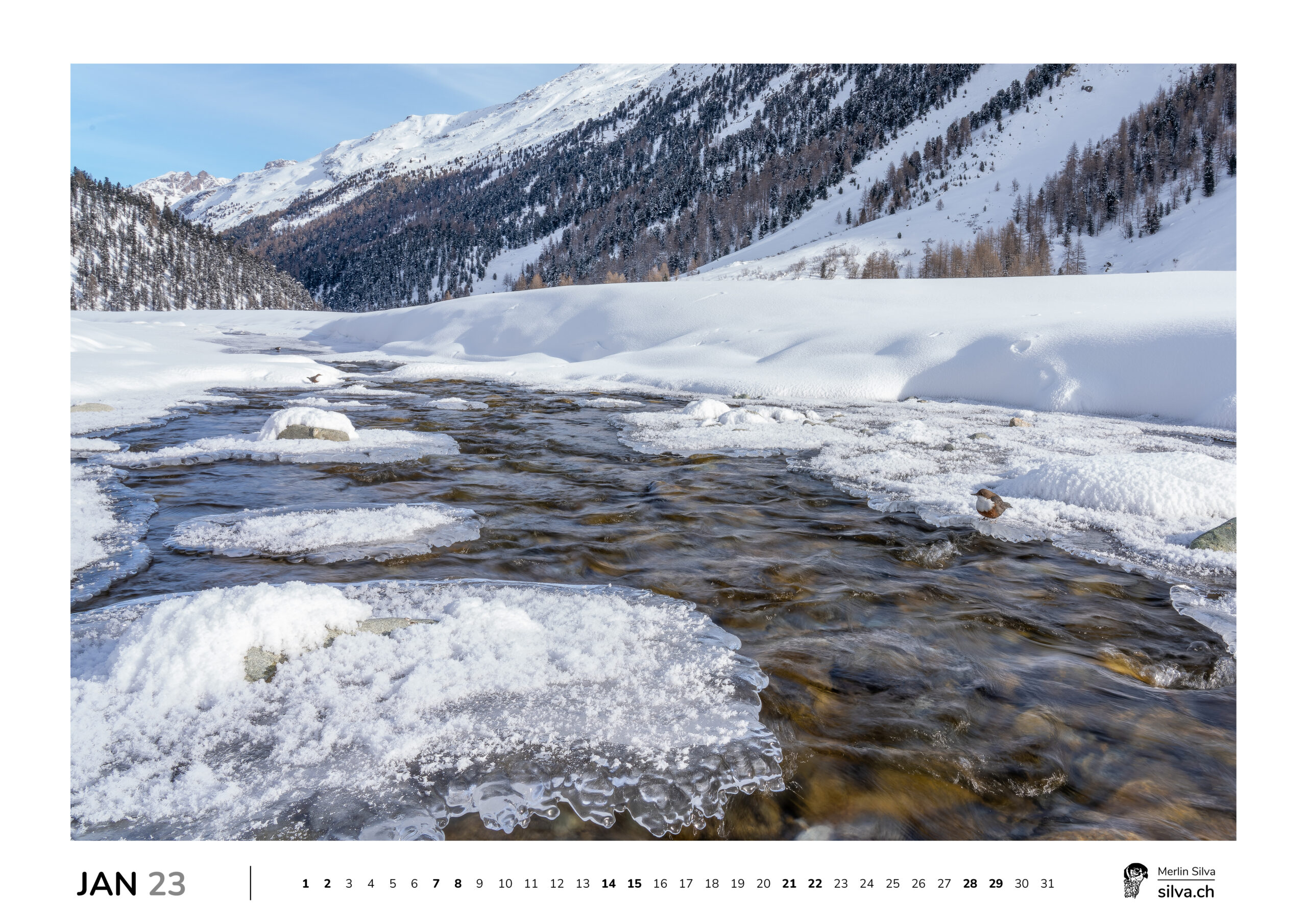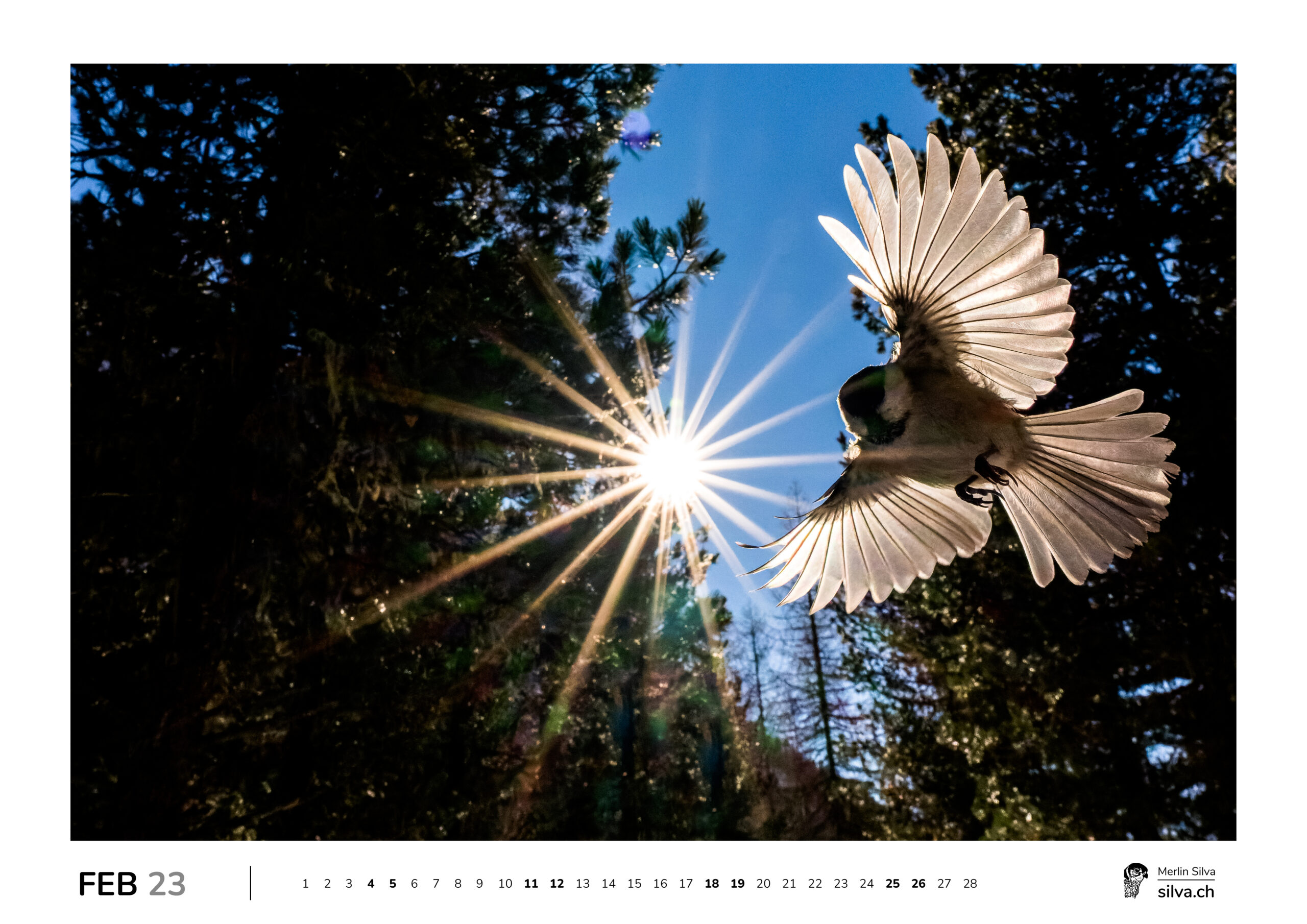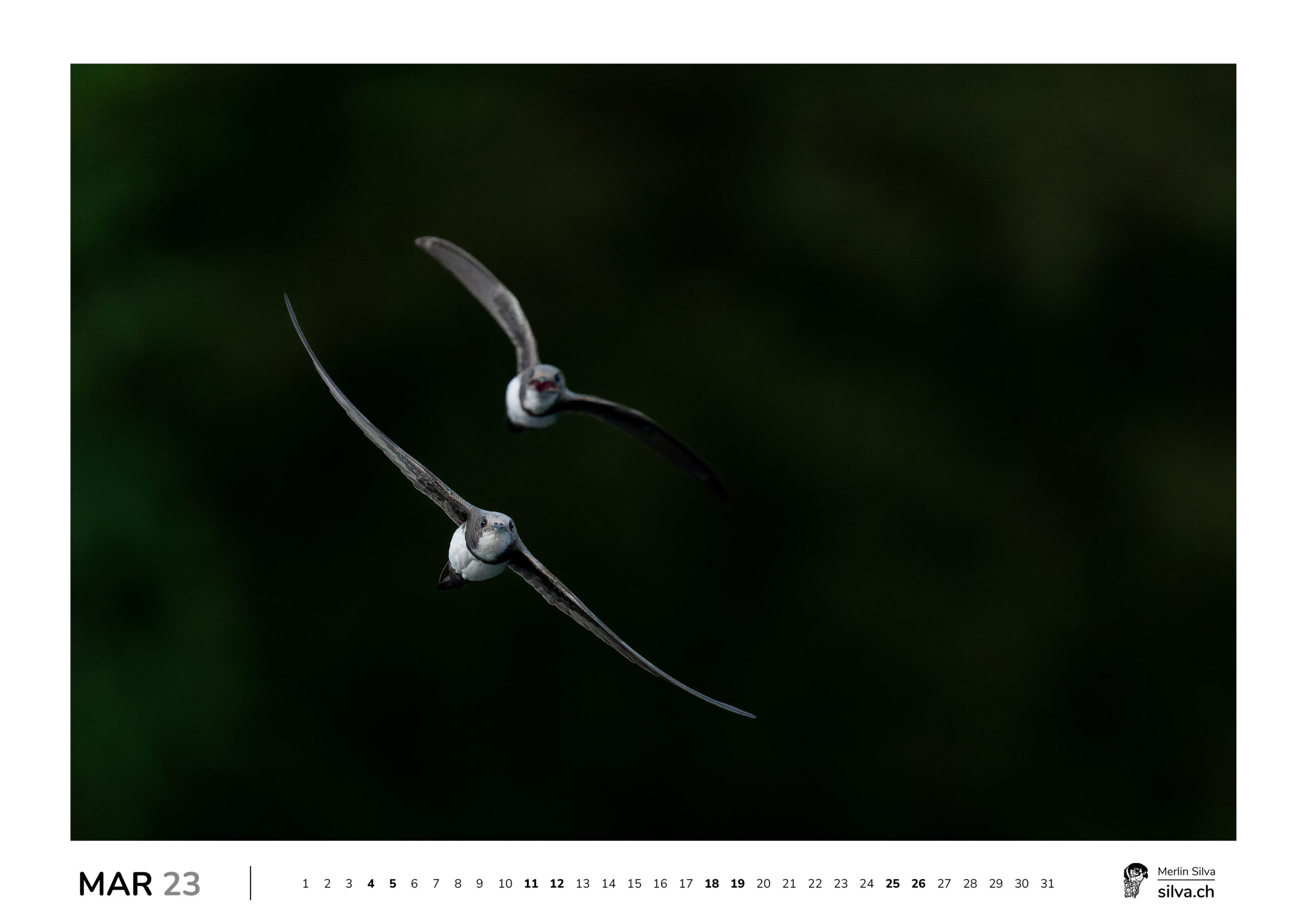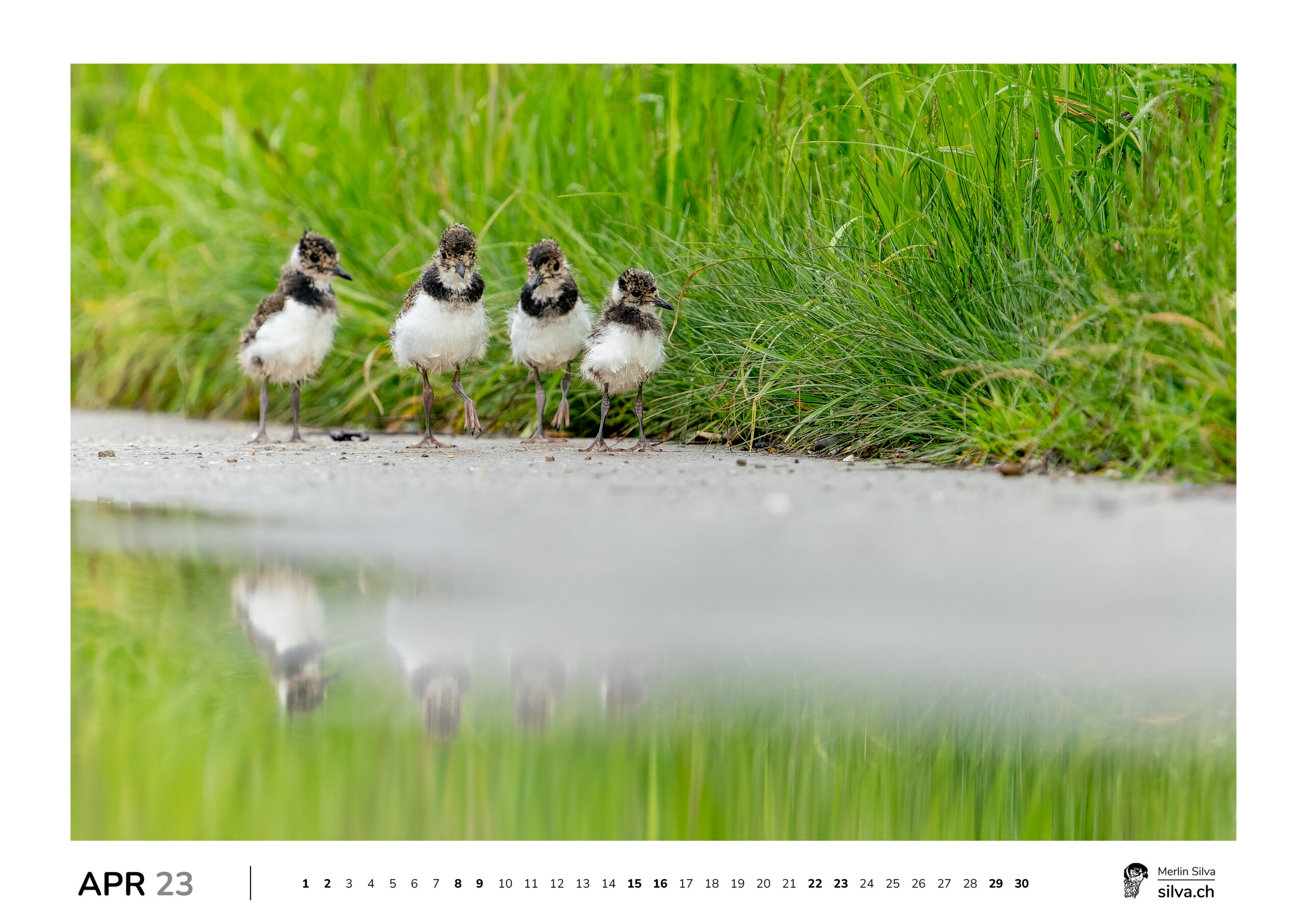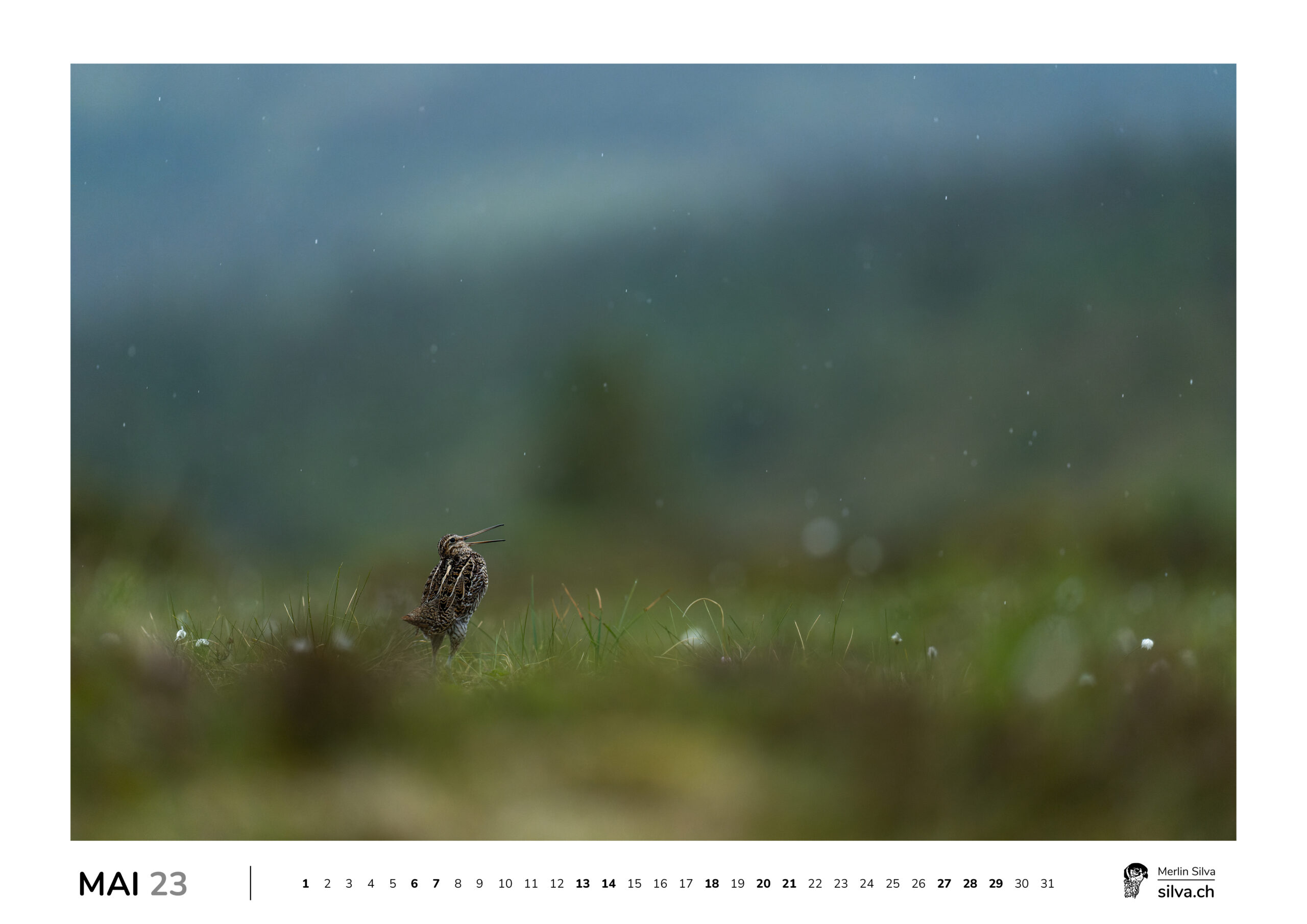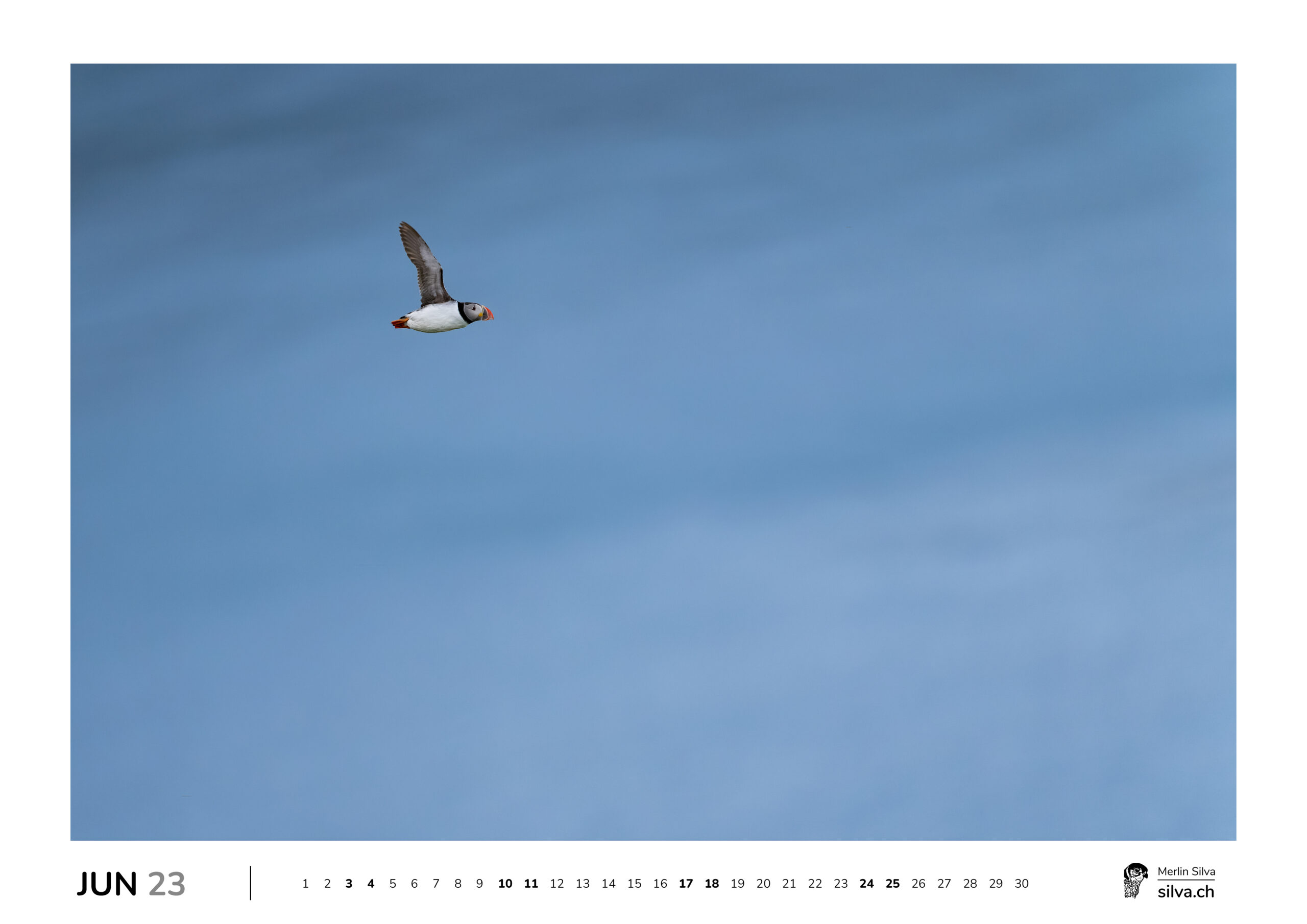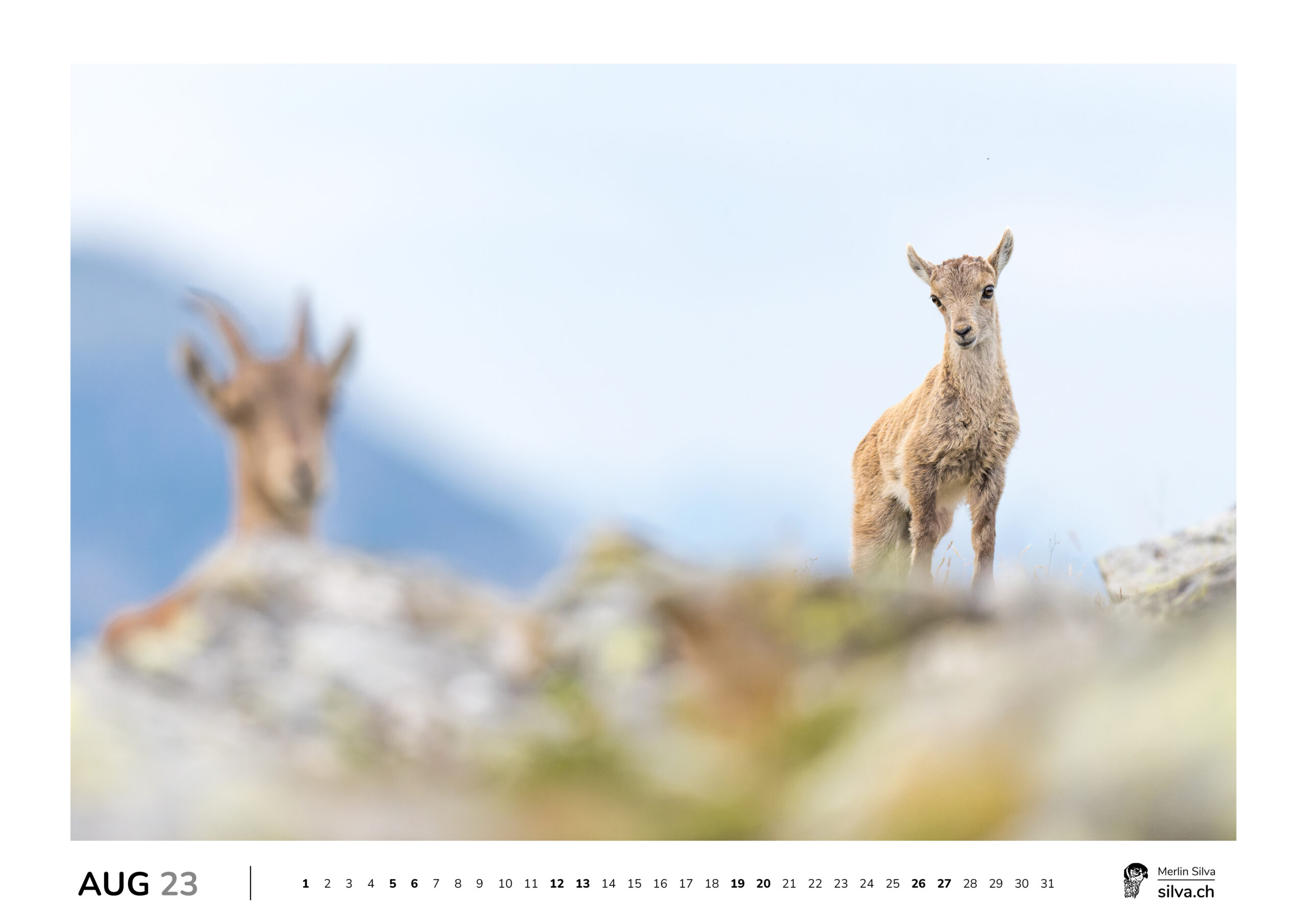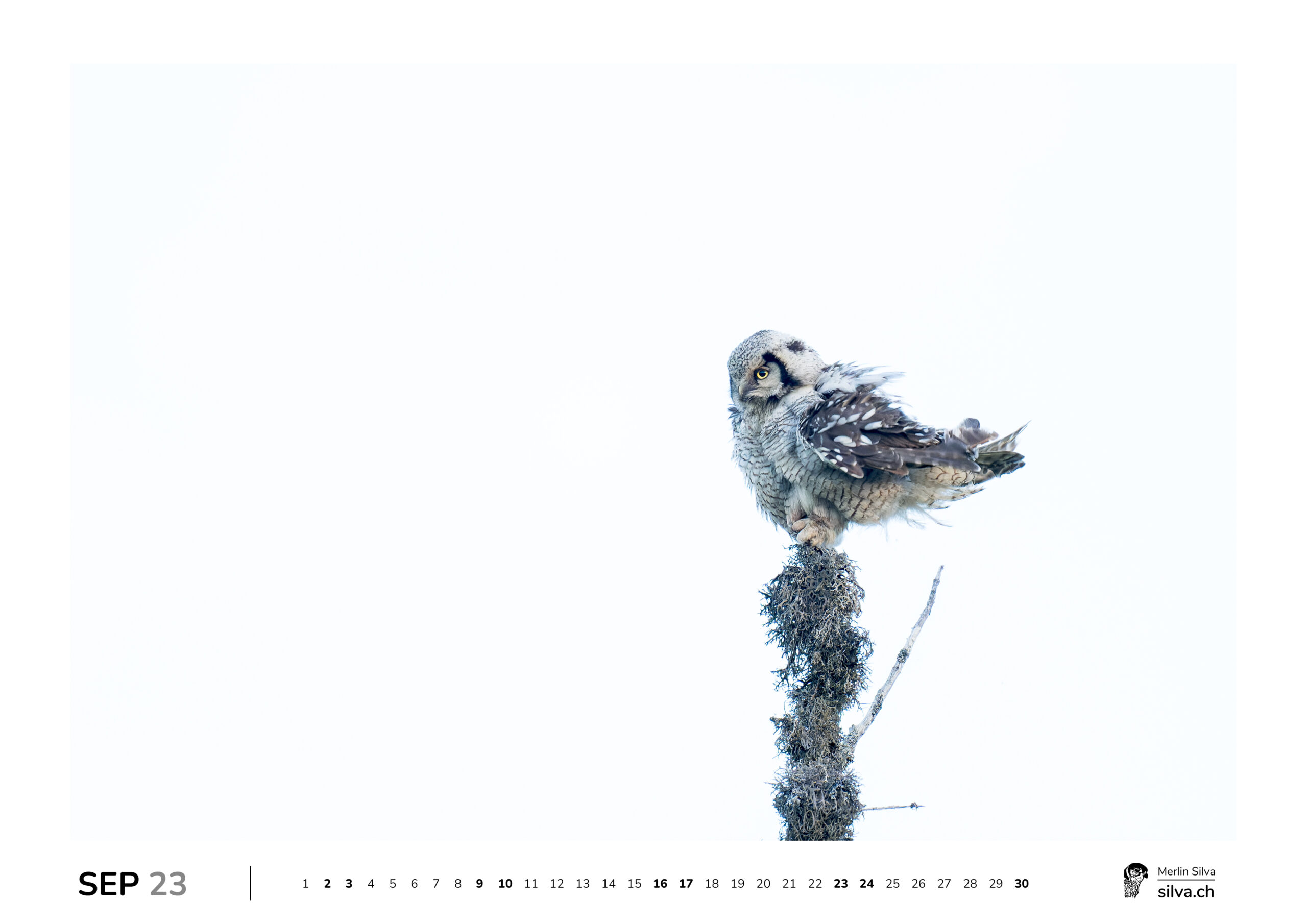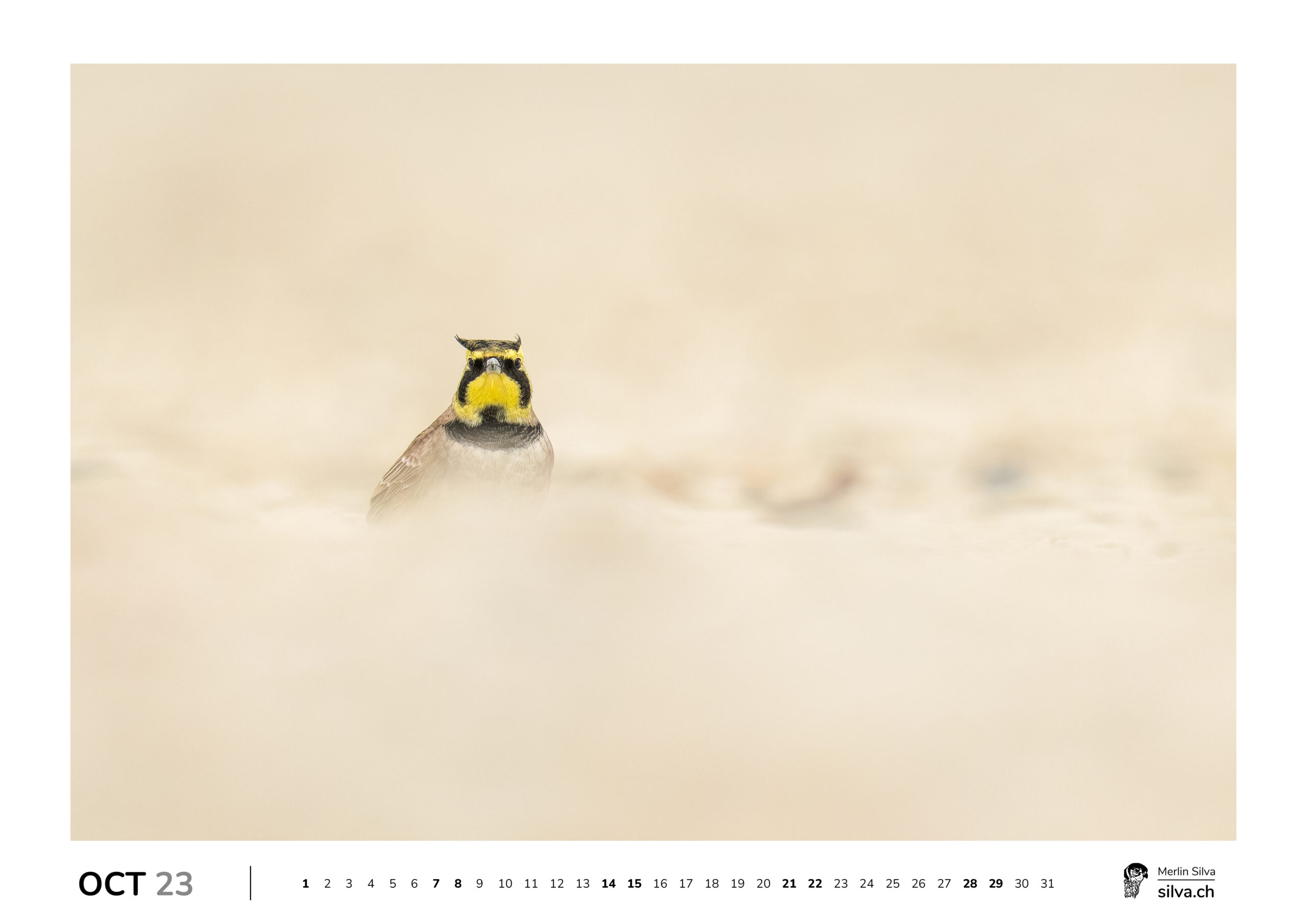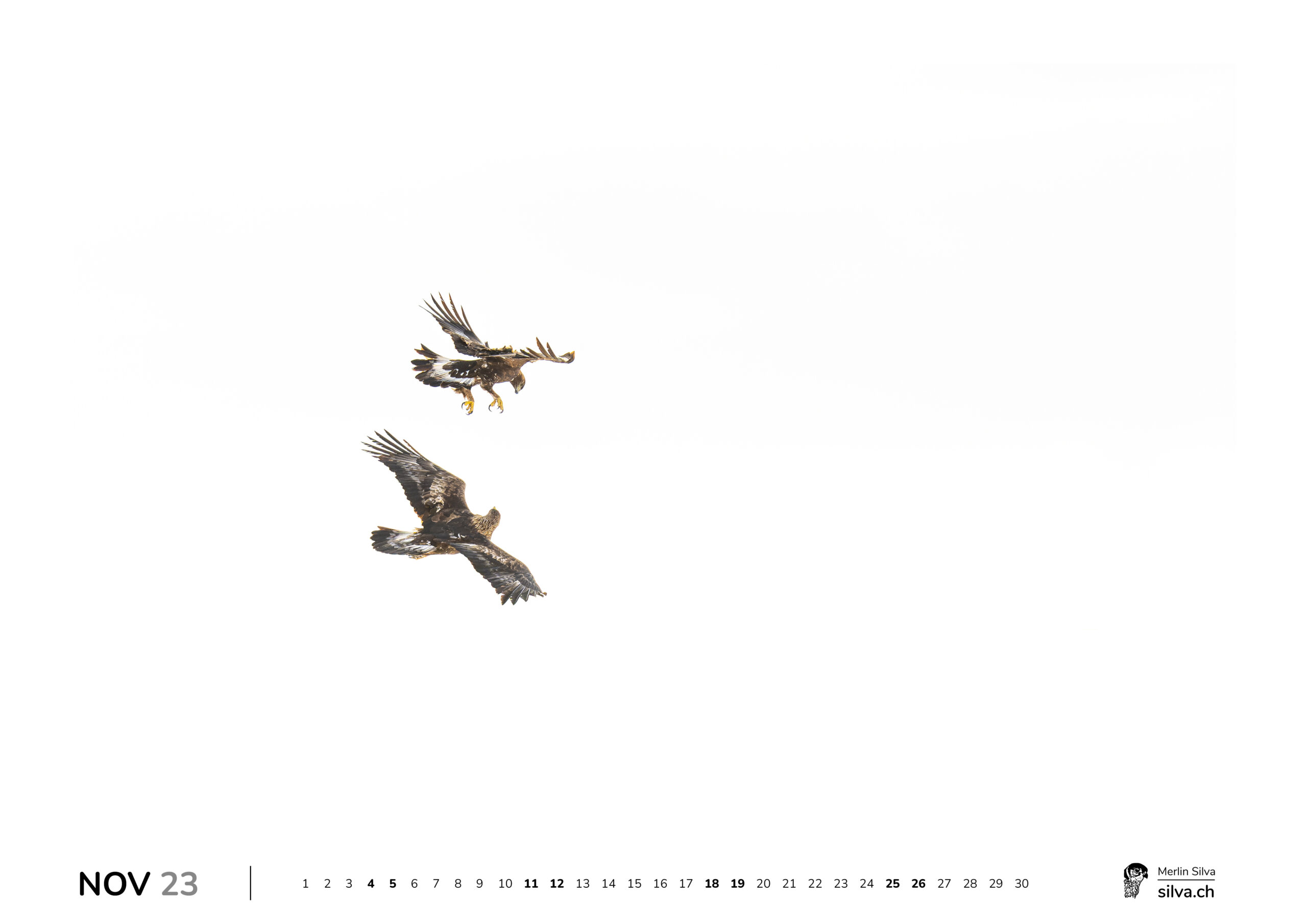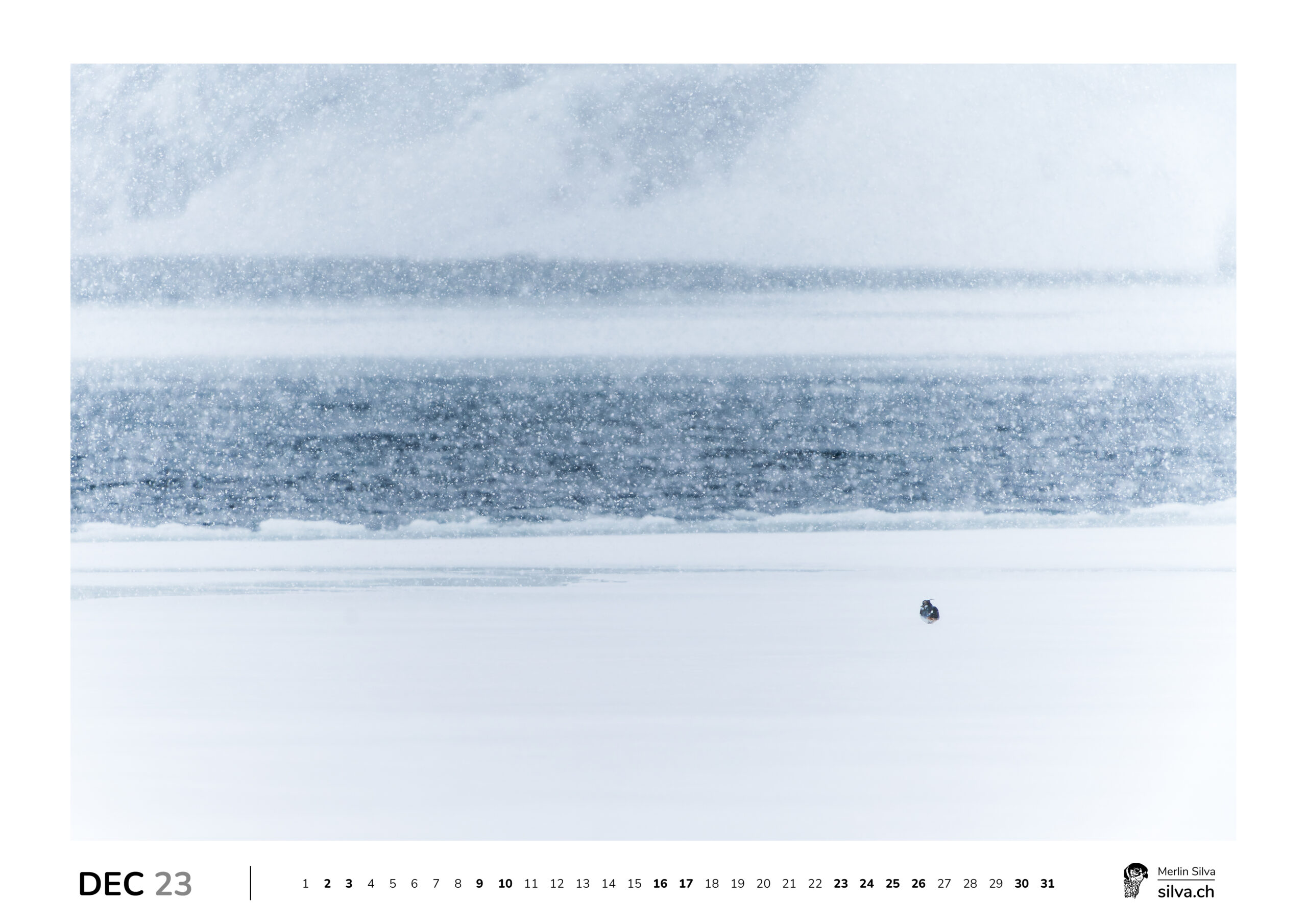January – White-throated Dipper
I spent several days in the canton of Graubünden in Switzerland at 2,000 meters above sea level with the dippers. Unbelievable how these birds persevere up there even at -20 degrees celsius in the cold winter, as long as there are still open water areas. Constantly they dived into the water. With a wide-angle shot I wanted to capture the environment and the river course with.
February – Alpine Tit
At the feeder birds are often very tame. I took advantage of this fact and tried to take pictures of the tits with the wide-angle lens – with their wings spread out and illuminated by the sun. So far in theory… Until it actually worked, over 4’000 pictures were necessary, of which of which 99.9% were unusable.
March – Alpine swift
There is always great joy when the Alpine swifts return from their winter quarters in March and dart around the houses in Bern again. A challenging motif: on the one hand, it must be possible to keep the darting birds in the picture, and on the other hand, the autofocus must be able to keep up. That evening I took more than 5’000 photos, many of them out of focus and/or with cut off wings.
April – Northern Lapwing
The whole spring of 2021 I worked in a Northern Lapwing conservation project of the Swiss Ornithological Institute in Sempach. We marked the nests and put up protective fences. The parents with their chicks are usually very shy and well hidden. On a rainy day there was nobody but me in the marsh – the curious chicks promptly took advantage of this for a small exploration tour on the field path.
May – Courtship of the Great Snipe
With my friends Jakob & Levi I spent 10 days in Norway in summer 2022. After a 30-hour train ride, sleep was also out of the question for the first few nights. Thanks to a photographer friend we were able to spend two nights in a camouflage tent in the middle of the Great Snipe breeding area. An incredible spectacle! At midnight the courtship reached its peak. At this time also the photo was taken.
June – Atlantic Puffin
In Norway I could also observe Atlantic Puffins for the first time in my life. Incredibly cute little colored clowns. With their small wings they are not the best flyers. Since their breeding grounds are on steep cliffs more than 100 meters above the sea, they had to soar in big circles. And often they had to do one or more laps of honor at the end, because they missed their nest by a few meters on their first attempt.
July – Eurasian Dotterel
This photo of a female Eurasian Dotterel was also taken in Norway. Unlike most other bird species, the roles of the sexes are reversed at the Eurasian Dotterels. Females have more colorful plumage and court the favor of males. After mating, females lay 4 eggs in a nest. Hatching the eggs and guiding the chicks is then the male’s job.
August – Alpine ibex
I spent August 1, 2022 – Switzerland’s national holiday – far from the hustle and bustle with Marc in the mountains. It was a real Ibex kindergarten. Several Ibex fawns were gymnastics and played with each other. Unbelievable, with which security they move already in this tender age in the steepest rock faces. A young fawn looked at us curiously – even the watchful mother had to take a quick look to see what her offspring had discovered.
September – Northern Hawk-owl
This Northern Hawk-owl was another highlight of our Norway trip. Only at the beginning she looked at us briefly to assess whether there was any danger from us. It seemed to answer the question with no. From then on she did not give us a second glance. Attentively she sat on different treetops, to suddenly dive to the ground and catch a mouse – but it was to feed her hungry 4-headed offspring.
October – Horned Lark
The Horned Lark is one of my favorite species. On the German offshore island Helgoland it can be observed well in autumn with a little luck. I lay down on the sandy beach and waited. Closer and closer she hopped towards me. At some point she must have wondered what strange thing was lying in the sand. For a few seconds she looked at me head on, before she continued to search looking for food. From this perspective, her name says it all.
November – Golden Eagles
This was probably my most impressive observation of Golden Eagles. It was freezing cold and there was a strong wind blowing. Ruben and I were actually looking for Rock Ptarmigans. But these two young Golden Eagles claimed the stage for themselves. Again and again they chased each other, performed spectacular flight maneuvers with somersaults and turns around their own axis – as if they wanted to present their flying skills to the whole world.
December – Northern Lapwing
I could hardly believe my ears when we suddenly heard the kiuuuwittt calls of a Northern Lapwing in the dense snow flurry. He was standing on the ice of the almost frozen lake and was surprised by dense snow flurries during his alpine mountain crossing. Bravely he defied the snow flurry and a little later flew on and disappeared behind a million snowflakes. Dear Lapwing, I hope you made it to the warm south!

